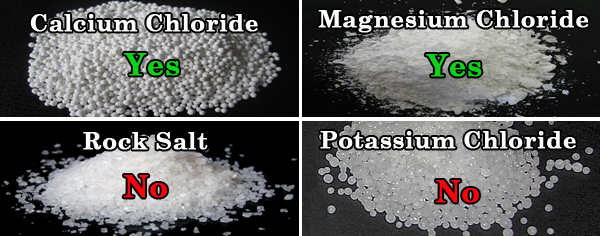Salt or Ice Melt
Shovels, snowblowers, and plows are all effective tools for removing snow but despite best efforts, ice will still find a way of creeping on sidewalks, patios and driveways. If you live in a climate where temperatures dip below freezing, snow and ice melts are recommended to prevent or minimize slipping hazards.
There are several options however generally categorized by performance, quality and versatility with pros and cons of each.
How to choose the right ice melt
There are basically six salts that are used as ice melt each having pros and cons. Most commercial brands use a combination of two or more salts, but the right type of salt will depend on the climate you live in and how you plan on using it.
Below outlines the major types of salts and characteristics of each:
- Calcium chloride (CaCl2) is one of the most popular options because it works quickly in temperatures as low as -40 C. If used in excess, it can damage plant life. ss.
- Magnesium chloride is considered environmentally friendly and better than most for use around pets. It lowers water's freezing point to -25C however it can damage concrete, asphalt, and plants.
- Calcium magnesium acetate (CMA) is less corrosive than salts with chloride, however it is only effective in temperatures of -7C and above so therefore has limitations.
- Rock salt is often used as it is inexpensive, however it is problematic in a number of ways: rock salt is damaging to just about any surface, lethal if pets ingest it, and doesn't work in low temps.
- Potassium chloride is considered safer for pets but is bad for plants and grass, and only works in temperatures -5C and above.
- Urea/carbonyl diamide is probably the safest option for pets and the environment, but it isn't very effective when used for de-icing.
It is suggested that excess salt be removed to minimize harmful runoff and dangers to pets and children.
In review, experts concur that calcium chloride is the best ice melt option for concrete surfaces with several factors being considered as noted above. Being a hygroscopic compound, it absorbs moisture and thereafter, starts dissolving. The dissolving process is exothermic and generates heat of up to 60C. This heat quickly melts the ice and snow, thus turning it into water. Based on general findings, calcium chloride is the best salt overall, though it is a good idea to mix things up over the course of the season. Also, make a point of only applying the salt in the areas where you want to remove snow and ice.




